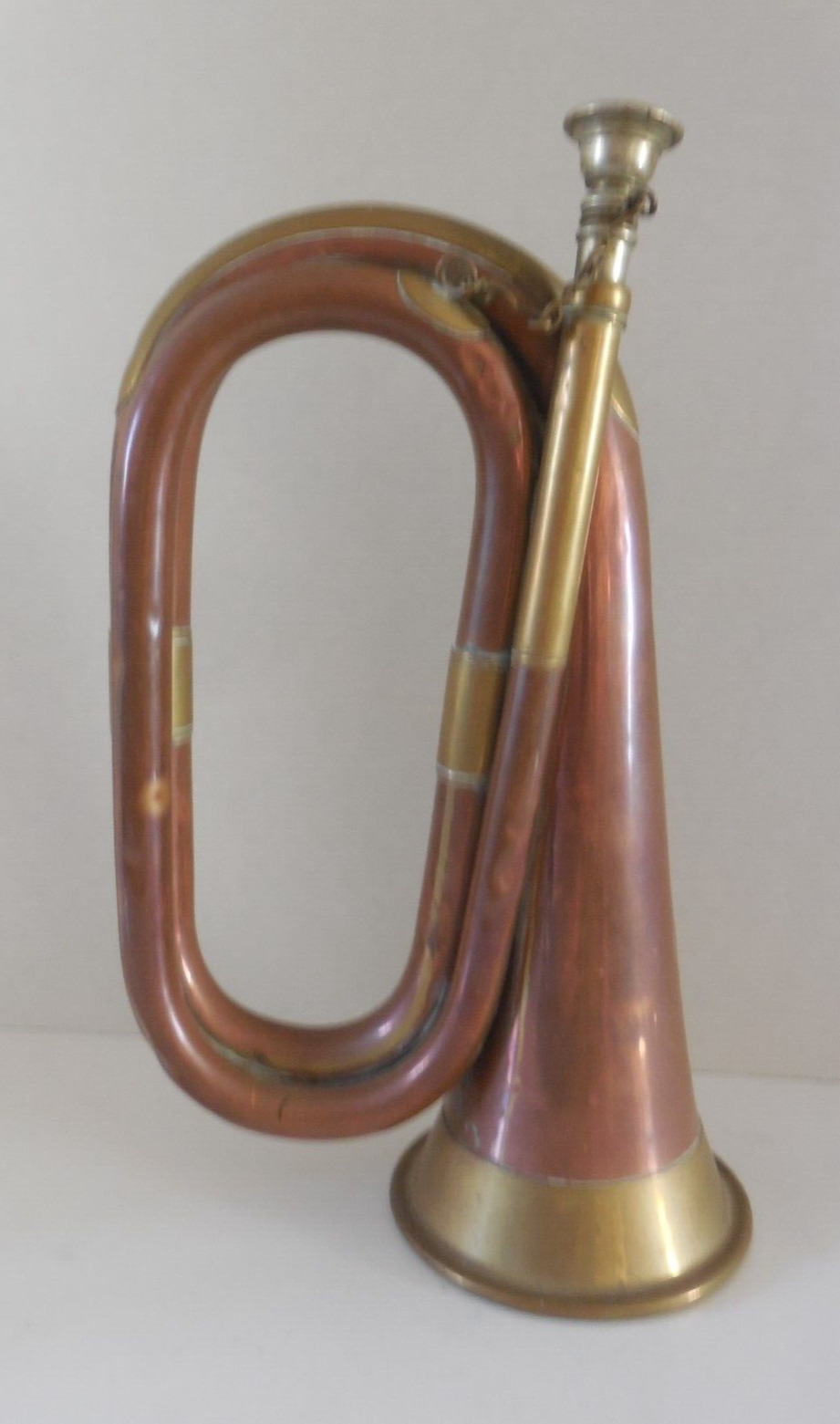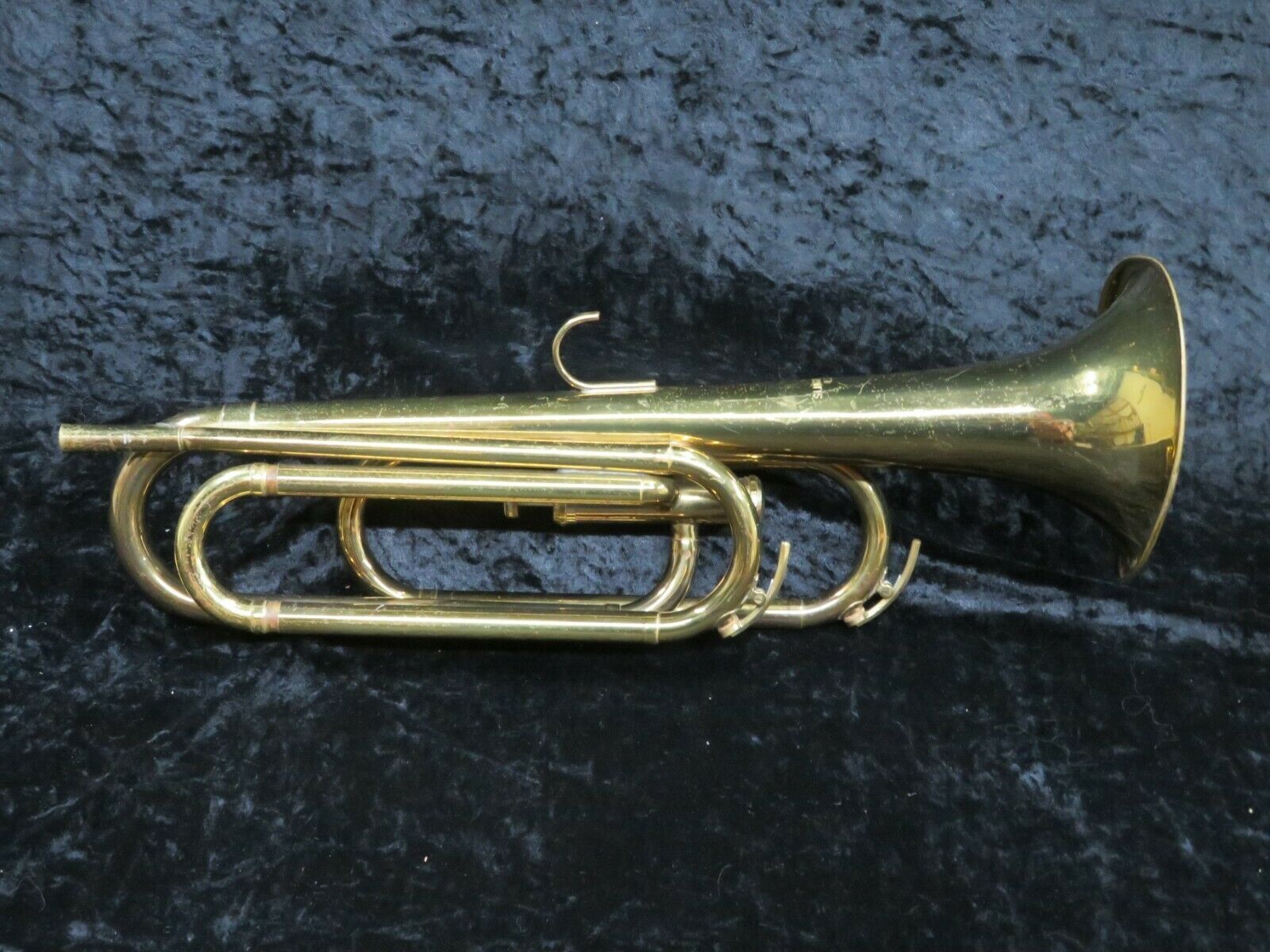-40%
15"Military Vintage Antique Bugle w/String Made in India-2 small dents-works-GD!
$ 15.83
- Description
- Size Guide
Description
Vintage bugle. Made in India. Two minor dents (See pictures 3 and 4 for detail)15" Long Military Vintage Antique Bugle w/String Made in India-2 minor dents-works.
Free Shipping in the USA!!
SOME GENERAL INFO ABOUT THE BUGLE
The bugle is one of the simplest brass instruments, normally having no valves or other pitch-altering devices. All pitch control is done by varying the player's embouchure. Consequently, the bugle is limited to notes within the harmonic series. See bugle call for scores to standard bugle calls, all consisting of only five notes. These notes are known as the bugle scale.

American naval bugler in 1917

Military bugle in B-flat

Chinese Eighth Route Army bugler during World War II. Photograph by Sha Fei.

Bugle scale. Bugle scale.mid (help·info)
HistoryEdit

Roman bugle, 4th century. Added to the British Museum in 1904, this late Roman bugle is bent completely round upon itself to form a coil between the mouthpiece and the bell-end (the latter has been broken off). This relic was found at Mont Ventoux in France.
The bugle developed from early musical or communication instruments made of animal horns,[1] with the word "bugle" itself coming from "buculus", Latin for bullock (castrated bull).[2] The earliest bugles were shaped in a coil – typically a double coil, but also a single or triple coil – similar to the modern horn, and were used to communicate during hunts and as announcing instruments for coaches (somewhat akin to today's automobile horn). Predecessors and relatives of the bugle included the post horn, the Pless horn (sometimes called the "Prince Pless horn"), and the bugle horn. The ancient Roman army used the buccina.
The first verifiable formal use of a brass bugle as a military signal device was the Halbmondbläser, or half-moon bugle, used in Hanover in 1758. It was U-shaped (hence its name) and comfortably carried by a shoulder strap attached at the mouthpiece and bell. It first spread to England in 1764 where it was gradually accepted widely in foot regiments. 18th-century cavalry did not normally use a standard bugle, but rather an early trumpet that might be mistaken for a bugle today, as it lacked keys or valves, but had a more gradual taper and a smaller bell, producing a sound more easily audible at close range but with less carrying power over distance.
^via Wikipedia
THANKS FOR LOOKING!!



















